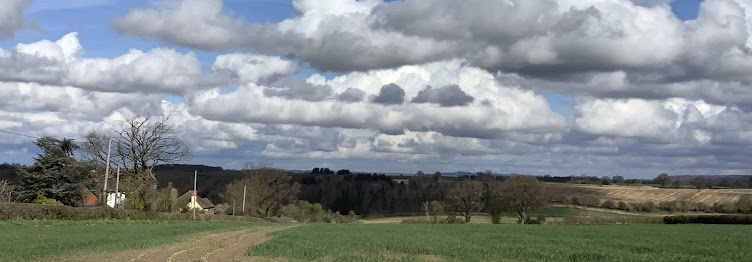Rummaging around in a box the other day, I came across these old menus. They are programmes for three Masonic dinners and they tell an interesting tale
The earliest programme is dated July 1902. It is beautifully printed with blind embossing, a satin ribbon and an insert. The menu, by today's standards, is breath takingly sumptuous, worthy of 'Downton Abbey' at its finest, but not really surprising, as this dinner was held just a year after the death of Queen Victoria and the Victorians did love their food.
The starters consist of mayonnaise of salmon, fillets of sole and lobster salad. The main courses offer a choice of galantine of veal, roast chickens, hams, tongues, galantines of chicken, small aspics (various), pigeon pies, dressed beef, veal and ham pies, roast lamb, veal and ham patties, salads, peas and potatoes. Moving on to the third course, we have wine jellies, fruit jellies, chocolate eclairs, charlotte russe, strawberry creams, vanilla creams and fancy pastry. If that wasn't enough, there were the usual cheese, butter and biscuits and finally a rather anonymous 'dessert'. Just in case one hadn't consumed enough chocolate eclairs.
After the many toasts, one could settle down to the after dinner entertainment, which was very much of the parlour singing kind, consisting of eight songs with accompaniment, by the Cecilia Quartette and others. As well as the national anthem and a song from a Gilbert and Sullivan opera (I think it is the Mikado), we have 'Keys of Heaven' 'The Country Dance' and appropriately, 'Good night Beloved'. I imagine that after the weight of the table offerings earlier, a few people might have quietly nodded off during the recital.
Moving on to November 1934 - post WW1 and pre WW2 - the programme is another work of art with more blind embossing, gold ink, silver ribbon and an insert. The menu however, is a little more restrained. There are general hor d'oeuvres, soups - mock turtle and consomme - a fish course of halibut and mornay (which is a white cheese sauce and spelt 'Morny on this menu), then braised sweetbreads with mushrooms, roast pheasant, game chips and seasonal vegetables. Finally there is ice pudding, charlotte russe, cheese straws, celery, another anonymous dessert, coffee and cream.
After the toasts, the entertainment seems to have been provided by selected 'brothers' - one at the piano and the other three presumably singing.
So we move on the final programme, dating from December 1948. This is a much humbler event. The programme is simply printed on one sheet of card and the menu is in keeping with the rationing that was still going on in Britain, though I suspect that it was quite a feast compared to most people's living standards.
Sparse by comparison to the previous menus, 1948 offered vegetable soup, roast guinea fowl, bread sauce, sausages, roast potatoes and Brussels sprouts, finished off with fruit salad, ice cream, and coffee.
After a modest amount of toasting, the after dinner entertainment was very much of its time; dancing to Fred Parry and his orchestra. How times had changed.











5 comments:
Those menus some up a death of an era pre WWI and then between the wars still keeping up the side, but after WWII totally gone, just encapsulates it.
My grandparents/Uncles/Aunts/Great grandparents etc were quite often part of the entertainment as well as being members(This even included me at the age of about 9). I remember her telling us about one notorious evening when one of the entertainment ladies was attempting to sing a very complicated piece about "healing the vine". The personage concerned had once been a very good singer but was now somewhat long in the tooth and one of my Uncles leaned over from behind my Grandmother and said she needed to put some fertilizer in her shoes. Everyone got the giggles which wouldn't have been so bad but in those days the rest of the performers were on show on the stage....Grandma said that that handkerchief would never be the same again :)
They did pretty good afternoon teas.
viv
See, these are the bits of history most historians don't even bother with -- the ephemera -- but they are precisely what make history so interesting, because they offer glimpses into the real lives of ordinary people. And the embossing in particular is elegant. Thank you for sharing.
This is fascinating! Think of the phalanx of cooks and staff needed to prepare the first two menus. Plenty of work for a lot of people. I like the last menu best, though--it's not so heavy and sounds delicious. Fun stuff, Gretel!
Hello Gretel —— these are wonderful, just my sort of thing. Grandpa was both a mason and a printer. The blanks with all the embossing and gold could be bought ready made and the local printer just added the text, but just look at the typefaces on that one from 1902!
I bet the one from 1948 is your favourite. The White Hart Hotel is still there in Brentwood but has been converted into 'The Sugar Hut', a TOWIE-themed nightclub. Times have changed indeed. I don't think the masonic ladies would like it now.
Post a Comment